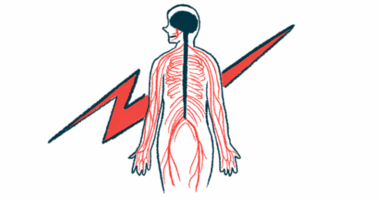People with bleeding disorders are living longer, but are we prepared?
Aging should be discussed in every conference, support group, and care plan

I never used to think about aging because I was too focused on surviving the present: heavy periods, chronic anemia, and endless insurance hurdles. But lately, I’ve started to feel the shift. My joints take longer to recover. Mornings come with stiffness. Even the swelling from a minor finger bleed lingers for weeks. The truth is, I’m aging with hemophilia — and no one ever told me what that would look like.
Our community is experiencing something unprecedented: Thanks to better treatment options, earlier diagnosis, and comprehensive care, many of us are living longer — and living well. But with longevity comes a new set of challenges. We are the first generation of people with hemophilia to grow old in meaningful numbers. We are blazing a trail into territory that even many hematologists haven’t fully explored.
For many of us, the damage was done early. Before prophylaxis became standard care, bleeds into joints were common, and the resulting damage is irreversible. Now, arthritis and chronic pain are part of daily life. It’s hard to tell where the hemophilia ends and the aging begins.
And then there are the comorbidities. Heart disease, high blood pressure, osteoporosis, and even cancer become more common as those of us with hemophilia age, just as they do in the general population. But managing them in someone with a bleeding disorder is more complicated. A doctor might suggest aspirin or blood thinners. A dentist might recommend oral surgery. A primary care provider might accidentally prescribe a medication that could cause internal bleeding.
I’ve spoken with people who’ve had to educate their cardiologist about factor infusions, and whose orthopedic surgeons were hesitant to perform joint replacements. It’s exhausting having to be the expert in every room.
As we age, so does our list of medications. And with more prescriptions come more risks. What interacts with factor? What increases the chance of bleeding? How do we balance pain relief with safety?
Some of us face surgical decisions: joint replacements, hernia repairs, and even cataract surgeries. These seemingly routine procedures carry greater risks for people with bleeding disorders, and coordinating care between hematologists and surgeons isn’t always easy. The result? Stress, delays, and sometimes postponed or avoided care — not because we don’t need it, but because it’s just too risky or complicated to pursue.
The emotional weight of aging
Beyond the physical changes, aging with hemophilia also takes an emotional toll. Many of us grew up being told we wouldn’t live very long. Some still carry trauma from the HIV and hepatitis C crisis of the 1980s and ’90s. Now that we are living longer, there’s both gratitude and uncertainty. We’re venturing into a stage of life that nobody expected us to reach — and that can feel lonely.
There’s also the looming question of independence. What happens when we’re no longer able to self-infuse? Or when mobility issues make it difficult to access treatment at all? I worry about ending up in assisted living facilities where staff may not understand bleeding disorders — or worse, being denied admission because of them. I fear becoming a burden to family or caregivers, especially when daily care becomes more complex.
And for women with bleeding disorders, aging presents its own set of concerns. Menopause can mask or exacerbate bleeding symptoms. Hormonal changes can affect clotting factor levels. Yet very little research exists on how aging specifically affects women with hemophilia or von Willebrand disease.
Writing the next chapter
So what can we do? Firstly, we need to talk about it. Aging shouldn’t be a taboo subject in our community. It should be part of every conference, support group, and care plan. Organizations like the National Bleeding Disorders Foundation, the Hemophilia Federation of America, and the Coalition for Hemophilia B are beginning to address this growing need. Some have hosted sessions on aging at recent events, but more is needed.
Secondly, we need research. Studies that focus on aging with hemophilia, particularly among women, people with inhibitors, and those with rare factor deficiencies, are essential. What are the long-term effects of different treatment plans? What role does chronic pain management play in quality of life? How can care models evolve to support us as we age?
Finally, we need each other, with peer support groups for older adults, mentorship between generations, and a place to share experiences, laugh about our creaky knees, and remind each other that aging is a privilege that many in our community previously never had.
We may be the first to walk this path, but we don’t have to walk it alone.
Note: Hemophilia News Today is strictly a news and information website about the disease. It does not provide medical advice, diagnosis, or treatment. This content is not intended to be a substitute for professional medical advice, diagnosis, or treatment. Always seek the advice of your physician or another qualified health provider with any questions you may have regarding a medical condition. Never disregard professional medical advice or delay in seeking it because of something you have read on this website. The opinions expressed in this column are not those of Hemophilia News Today or its parent company, Bionews, and are intended to spark discussion about issues pertaining to hemophilia.







Leave a comment
Fill in the required fields to post. Your email address will not be published.